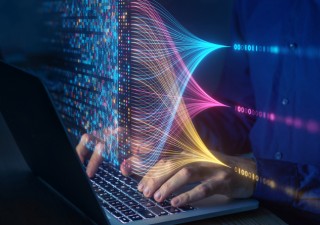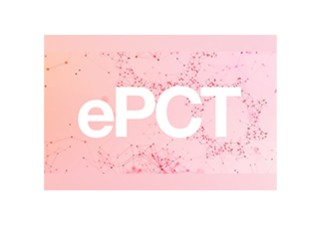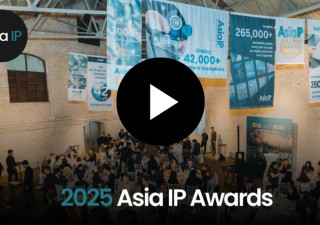Examination and utilization of AI-related patents in Japan
31 March 2025

Japan’s patent system offers high transparency and stable protection, even for AI-related inventions. Kentaro Ito explains how the effect of a Japanese patent right can extend to AI-related inventions – even when an AI server is located outside Japan.
In recent years, AI technology has been utilized across a wide range of fields. This article provides an update on the current status of the examination and utilization of AI-related patents in Japan.
First, it demonstrates that Japan’s patent system offers high transparency and stable protection, even for AI-related inventions.
Next, I would like to introduce a recent Supreme Court decision which held that, even in a system claim composed of multiple elements where at least one of those elements is located abroad, the effect of a Japanese patent right can still extend to such cases. As a result of this decision, even when an AI server is located outside Japan, if services are provided to users in Japan, there is a possibility that Japanese patent rights may still apply. Consequently, it is expected that stronger protection for AI-related inventions can be secured in Japan.
Examination practice of AI-related patents in Japan
Collection of examination case examples for AI-related patents
In Japan, AI-related patents, like general patents, are required to meet patentability requirements such as eligibility, disclosure requirements including enablement and support requirements, as well as novelty and inventive step.
AI-related inventions are regarded as a subtype of software-related inventions, and for matters specific to software, the examination proceeds in accordance with the Examination Guidelines for Computer Software-Related Inventions.
However, with respect to AI-related inventions, there are specific issues and considerations unique to AI. In response, the Japan Patent Office (JPO) has published a collection of examination case examples related to AI technologies. This collection clearly presents the key points in examining eligibility, disclosure requirements, novelty, and inventive step. Although the specific details of each case are omitted here, the main points regarding the examination of AI-related inventions derived from the case examples are summarized as follows:
A) Eligibility
-
Training data used in machine learning, by itself, constitutes merely the presentation of information and does not satisfy the requirement for invention eligibility.
-
However, when information processing by software – such as a method for generating images used as training data – is concretely implemented using hardware resources, it satisfies the requirement for invention eligibility.
B) Description requirements (enablement and support requirements)
-
To satisfy the enablement and support requirements for training data used in machine learning, there must exist a certain relationship, such as a correlation, among the various types of data used in the training data; or, based on the common general knowledge at the time of filing, it must be reasonably inferable that such a relationship exists among the data types included in the training data.
-
In inventions such as those in materials informatics, where a substance is estimated by AI to possess a certain function, if the detailed description of the invention does not include working examples where the substance is actually produced and its function evaluated, the AI’s predicted result cannot substitute such an evaluation. In such cases, the enablement and support requirements are not satisfied.
C) Novelty and inventive step
-
Judgments regarding the novelty and inventive step of AI-related inventions are also made in accordance with the Examination Guidelines and the Guidelines for Computer Software-Related Inventions, just as for other software-related inventions.
-
For example, merely systemizing tasks performed by humans through the use of generative AI does not satisfy the requirement of inventive step.
The JPO, taking into account the recent developments in AI-related technologies, continuously updates the collection of examination case examples for AI-related inventions, thereby ensuring transparency in examination. In fact, the JPO expanded the case example collection last year to include examples related to generative AI. By formulating application strategies based on the latest case examples, it is expected that applicants can avoid reasons for rejection during examination and achieve smoother acquisition of rights.
Examination framework at the Japan Patent Office
In general, examinations conducted by the JPO are both fast and consistent. According to statistical data published by the JPO, the average total pendency from the request for examination to grant in 2023 was 13.8 months, and the rate at which patents were invalidated following a successful trial for invalidation was 11.5 percent. Compared to other countries, both the speed and consistency of examination in Japan are superior.
Furthermore, with regard to AI-related inventions, the JPO increased the number of AI-specialized examiners in 2023 and assigned at least one AI examiner to each examination division. This has established a framework that enables the appropriate and consistent handling of examinations for AI-related inventions across all technical fields.
Utilization of AI-related patents
Effect of Japanese patent rights when some components are located overseas
Under the principle of territoriality, the effect of patent rights in each country is recognized only within that country’s territory. Therefore, it is a challenging issue in every jurisdiction whether patent rights extend to processing performed on servers or in the cloud located outside the country. This issue is also present in Japan. In the past, there were concerns that if the main processing by AI was carried out on servers located overseas, then even if a patent was granted in Japan, the Japanese patent right might not be enforceable against AI processing conducted on those foreign servers.
However, on March 3 of this year, the Supreme Court of Japan rendered a decision that interpreted the territoriality principle flexibly. The court held that, even if part of a system’s components are located outside Japan, the effect of a Japanese patent right may still be applicable to acts that are conducted across national borders.
This Supreme Court decision is the first to establish, at the highest judicial level, that Japanese patent rights may extend to cross-border implementation acts involving network-related inventions, as well as to clarify the standards for such applicability. It holds significant importance in the context of Japanese patent practice. As a result, it has been suggested that, in network-based services, even if an invention is carried out on servers or in the cloud located overseas, it may still be regarded as falling within the scope of implementation under a Japanese patent if certain criteria are met. In light of this ruling, it can be said that even when AI operates on servers located outside Japan, there is ample opportunity to obtain and enforce Japanese patent rights if the AI service is targeted at users within Japan.
Summary of the Supreme Court decision
A brief summary of the above-mentioned Supreme Court decision is provided below. In this decision, the Court presented the following interpretation: “In today’s world, where the cross-border flow of information via telecommunications networks has become extremely easy, if, in a system comprising both servers and terminals, the server—which constitutes part of the system – is located outside the territory of Japan, and the effect of Japanese patent rights is always denied simply because the system includes components located outside Japan, this would go against the purpose of the Patent Act, which is to contribute to the development of industry through the protection and encouragement of inventions by granting the patentee the exclusive right to commercially exploit the patented invention. Therefore, even in such cases, if the act in question, when viewed as a whole, can be substantively regarded as implementation within the territory of Japan, there is no reason to preclude the application of Japanese patent rights to that act.”
Building on this interpretation, the court concluded that it was appropriate to evaluate that the defendants were, in substance, implementing the patented invention within the territory of Japan, based on the following two criteria for consideration, among others:
-
Effect of the invention – The alleged infringing act naturally causes the effect of the patented invention to be realized on a terminal located in Japan, and in relation to the realization of such effect, the fact that the server is located outside the territory of Japan holds no particular significance;
-
Economic impact – In relation to the fact that the patentee holds the patent right in question, there are no discernible circumstances indicating that the alleged infringing act would not have any economic impact on the patentee.
Conclusion
In conclusion, the benefits of obtaining and utilizing AI-related patents in Japan can be summarized as follows:
Advantage in strategic construction of a patent portfolio. AI technology is rapidly evolving, and not only software but also combinations with hardware, methods of data acquisition and processing, and other aspects are expanding the range of patentable subject matter. Companies must carefully design claim structures and filing strategies to ensure comprehensive protection of these technologies. The Japanese system offers the potential for smooth and stable acquisition of rights for AI-related patents.
Business advantage. With the aforementioned Supreme Court decision, it is now possible that AI services provided via the cloud may fall within the scope of Japanese patent rights if they target users in Japan. This creates room for utilizing Japanese patents even when competitors use overseas servers, as long as the AI services are ultimately provided to users within Japan.
Japan as a strategic market. For companies that regard the Japanese market as important, obtaining patent protection in Japan for AI-related inventions can be highly beneficial from a business perspective. In particular, in Japan – which has a large potential customer base in IT and IoT fields – acquiring patents early can serve as a deterrent to imitation and can work to a company’s advantage in licensing negotiations.
As outlined above, the Japanese patent system has the potential to provide flexible and broad protection even for AI-related inventions. As part of building a global patent portfolio, filing and obtaining rights for AI-related patents in Japan – and considering the active utilization of those patents – can bring significant strategic advantages to businesses.








